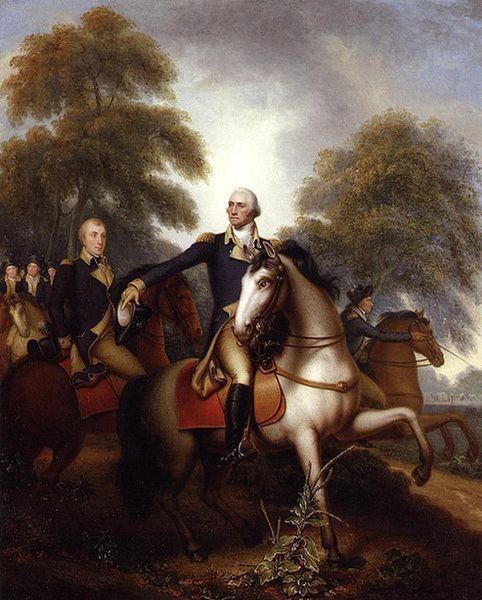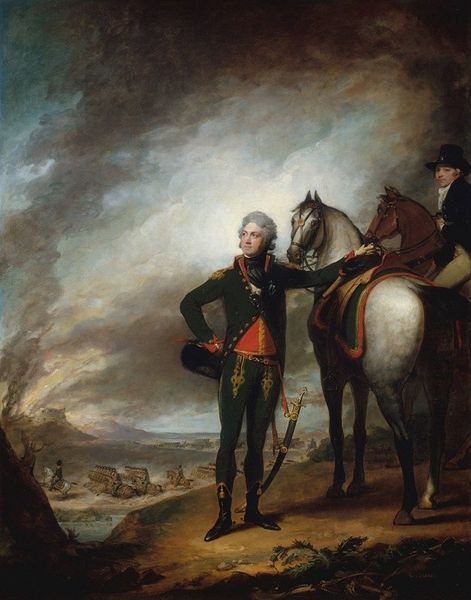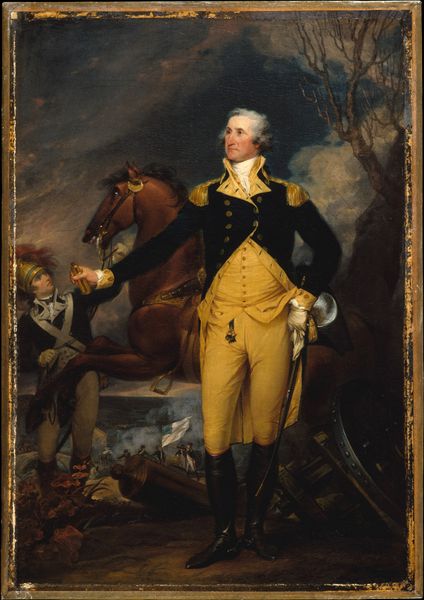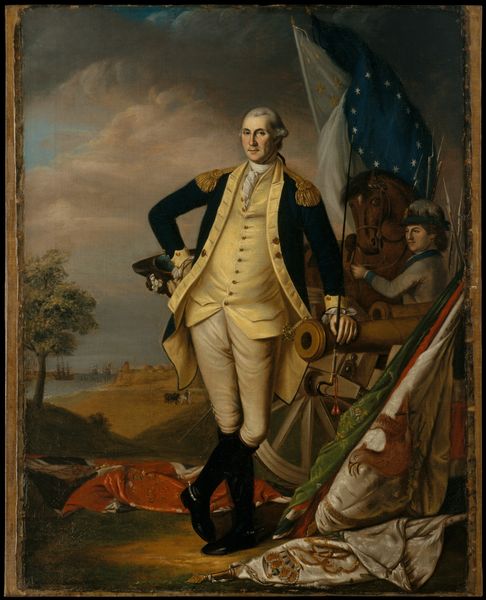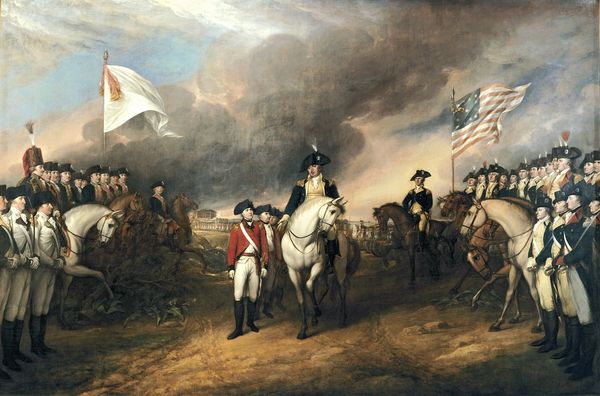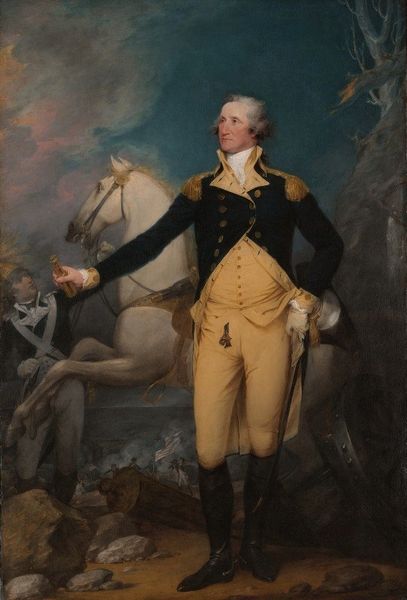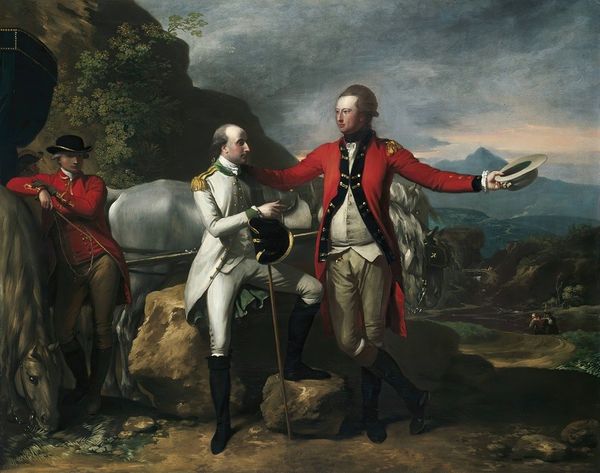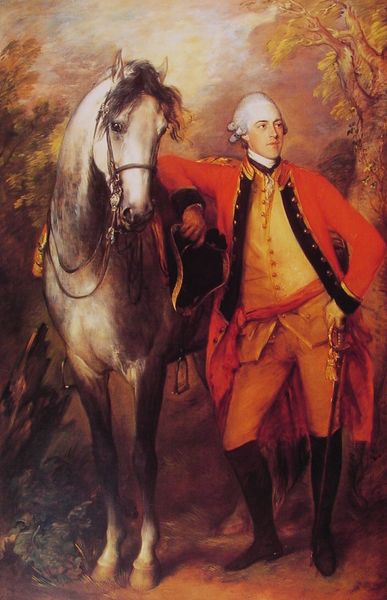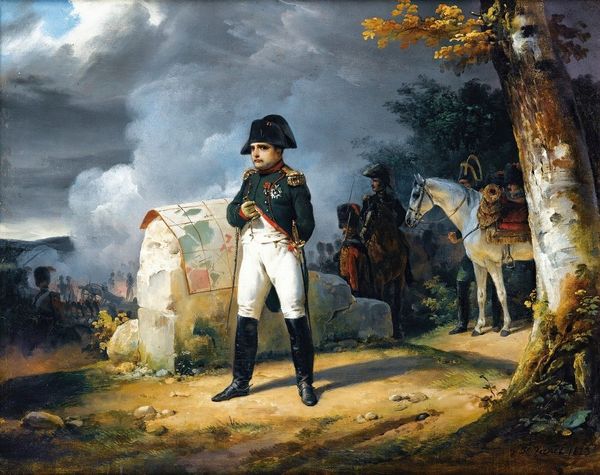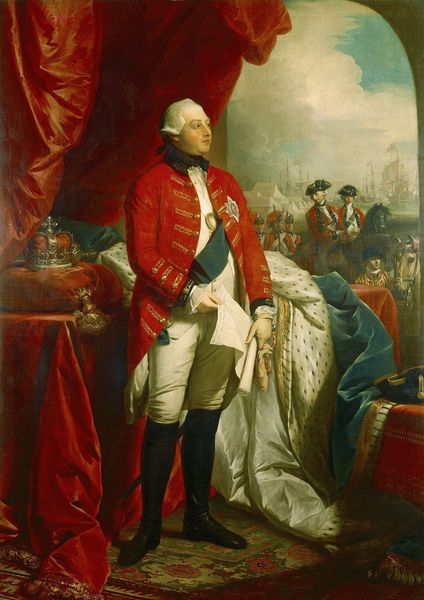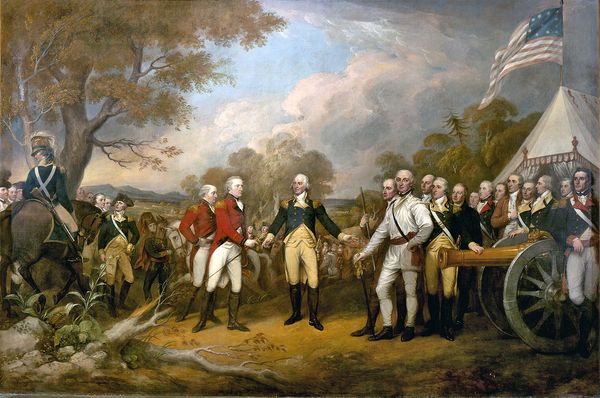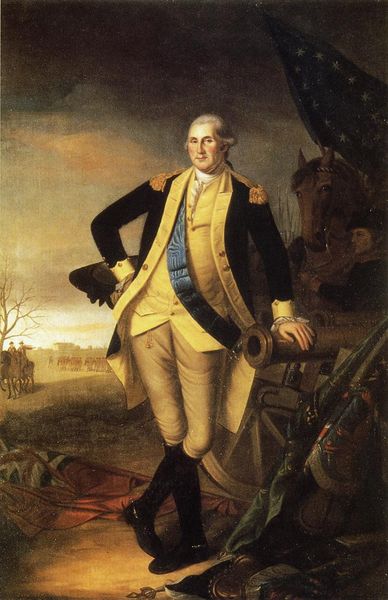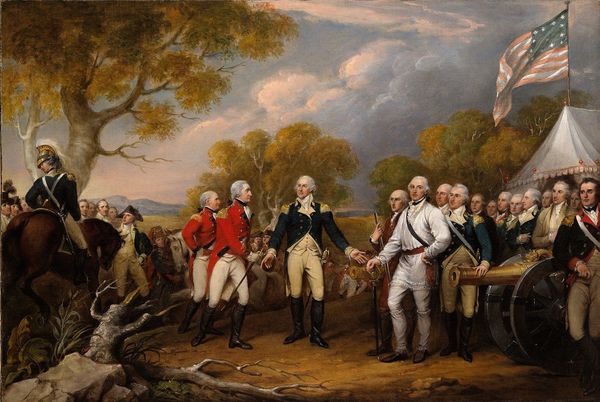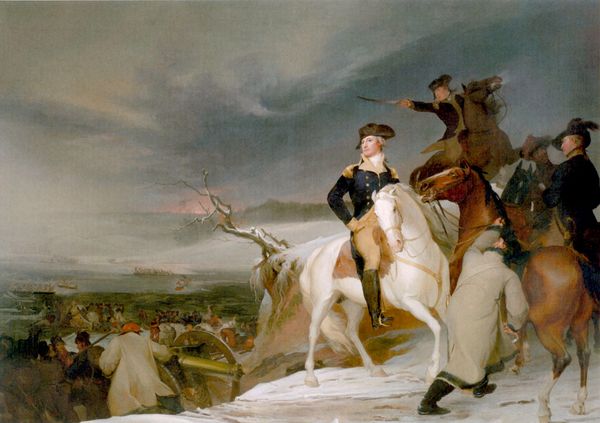
painting, oil-paint
#
portrait
#
neoclacissism
#
painting
#
oil-paint
#
landscape
#
romanticism
#
cityscape
#
history-painting
#
academic-art
#
realism
Dimensions: overall: 349.25 × 306.07 cm (137 1/2 × 120 1/2 in.) framed: 394.97 × 351.16 × 19.69 cm (155 1/2 × 138 1/4 × 7 3/4 in.)
Copyright: National Gallery of Art: CC0 1.0
Curator: Standing before us is Rembrandt Peale’s imposing oil on canvas, "Washington before Yorktown," painted around 1824-1825. Editor: My first impression is of grandeur, wouldn’t you agree? The scale is significant, and the composition, particularly the central placement of Washington on horseback, immediately commands attention. Curator: Indeed. And it’s interesting to consider Peale's lineage; the artist was part of a prominent family of painters. He even sought to create the definitive portrait of Washington, fueled by popular demand and the nascent American identity taking shape through material representation. Think about the labor invested here—the grinding of pigments, the weaving of canvas. It all speaks to a desire to manufacture a national icon. Editor: Absolutely. Speaking formally, look at how the landscape subtly contributes to the heroic narrative. It’s not merely a backdrop. The diffused light and carefully placed figures enhance the drama of the scene. The way the horses are positioned, with one mid-gallop, the contrast in musculature, lends movement to what could have been a very static, traditional composition. Curator: And if you dig into the context, Yorktown becomes shorthand for revolutionary victory, crucial in defining America's role in global trade networks and future manufacturing. It isn't just about a battle; it’s about reshaping production and labor practices in the emerging nation. We’re seeing a visual record intertwined with these economic transformations. Editor: I’m drawn to the colors themselves, too. The dark blues and blacks of the uniforms contrast strikingly with the pale horses and the luminous sky, which serves to enhance Washington's idealized features, wouldn’t you say? The use of color seems directly intended to provoke a specific, controlled emotional response in the viewer. Curator: Which comes back to the artist’s hand – and his social position and his own relationship to economic shifts in the art world. He wasn’t just a detached observer. Peale actively shaped and profited from this cultural phenomenon, providing painted symbols that could be reproduced and consumed. Editor: A fitting legacy then, as an art piece, not just as a record of history. What's striking about it, is how it continues to work on the imagination to make you reflect on structure, agency, and artistic method. Curator: Indeed; analyzing "Washington before Yorktown" through its making allows us to better examine the cultural labor invested in crafting national mythologies that shape how resources are created and circulated.
Comments
No comments
Be the first to comment and join the conversation on the ultimate creative platform.
